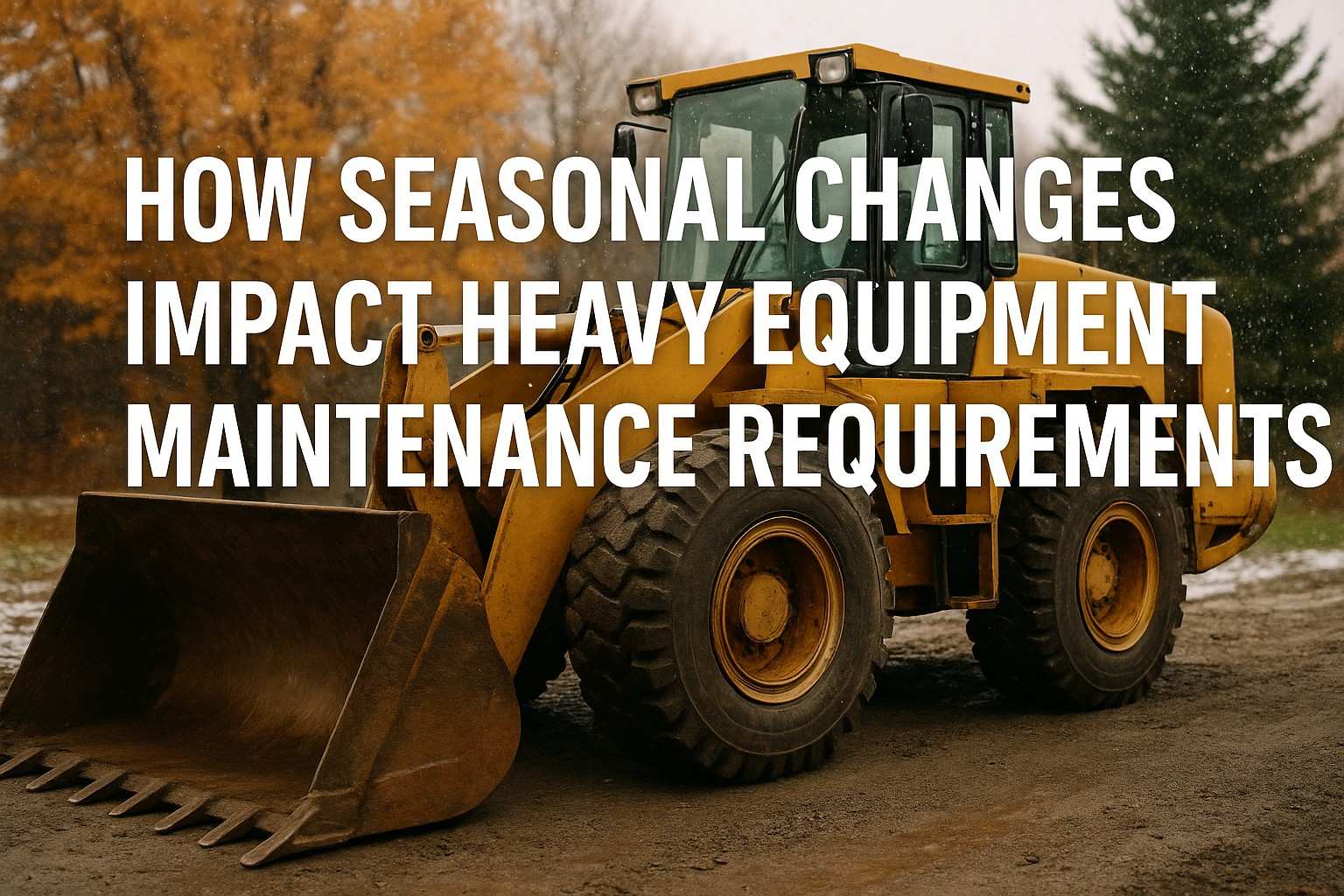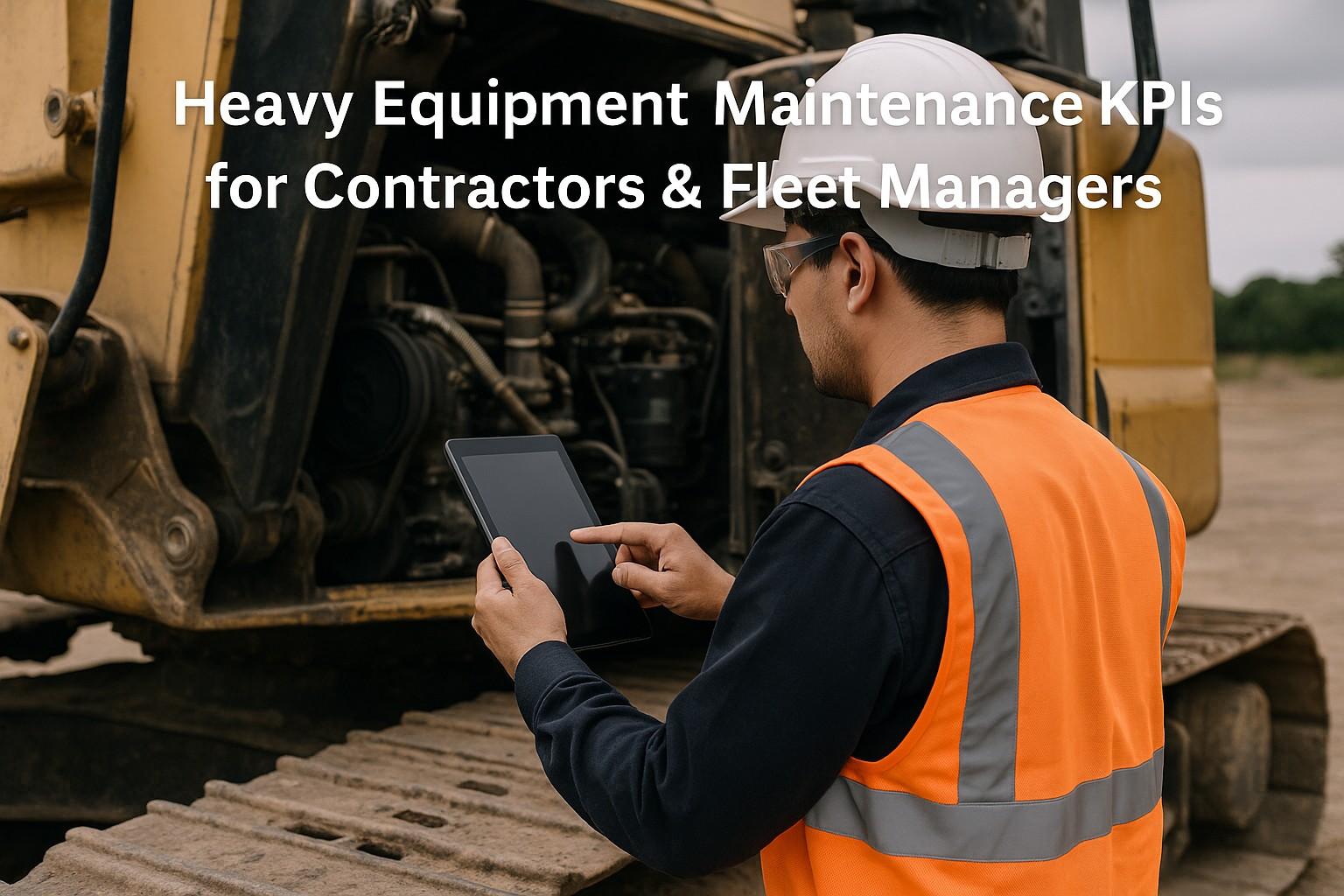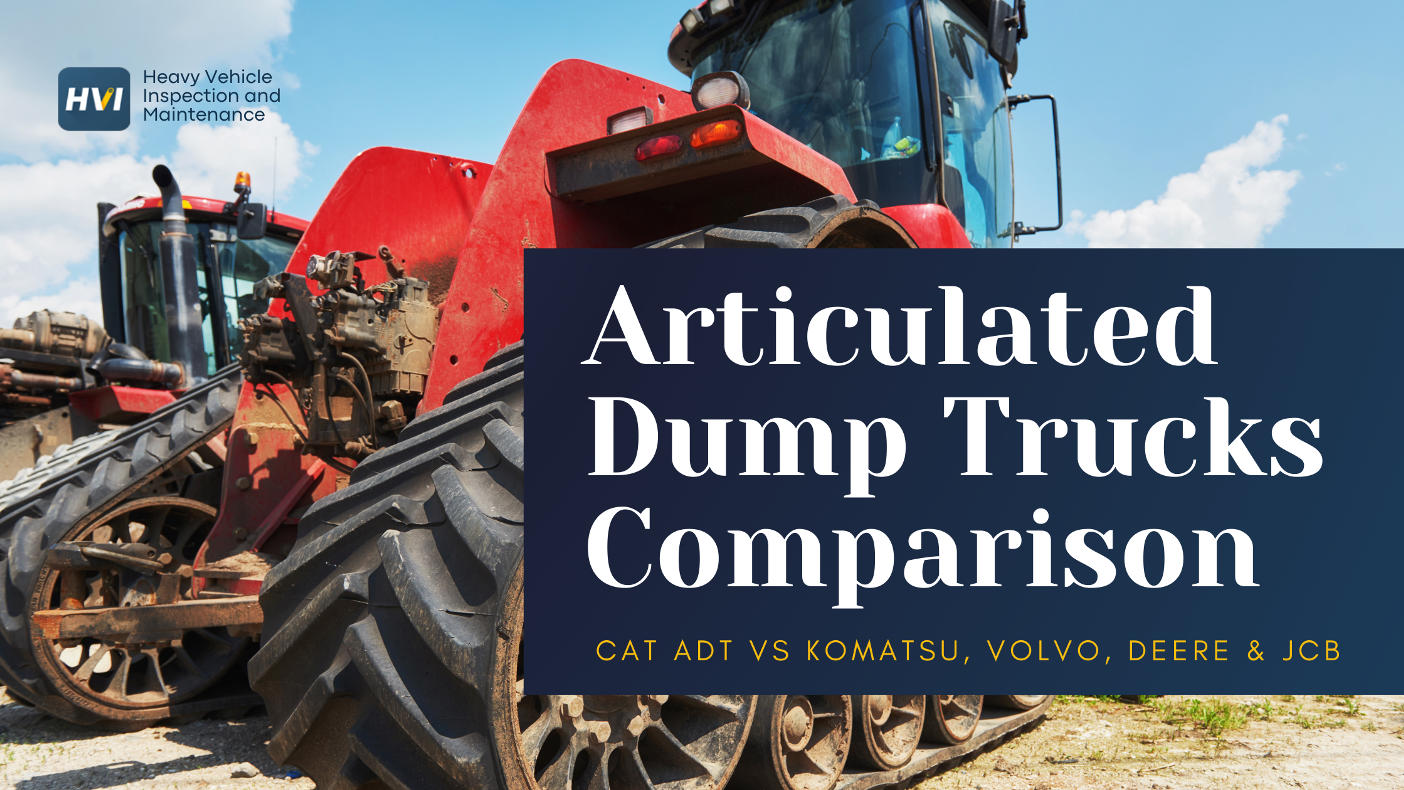Proven strategies that slash maintenance costs, prevent breakdowns, and maximize ROI for heavy vehicle fleets
Most fleet managers focus on obvious maintenance like oil changes and DOT inspections, but the real money-savers are hiding in plain sight. While you're checking off routine preventive maintenance tasks, your competitors are discovering overlooked fleet maintenance practices that deliver massive cost savings and operational improvements.
In heavy industry, where downtime costs thousands per hour and maintenance budgets are under constant scrutiny, these six overlooked practices can be the difference between struggling with reactive repairs and running a profitable, efficient operation.
Why Traditional Fleet Maintenance Falls Short in Heavy Industry
Heavy industry fleets face unique challenges that standard fleet management software and basic preventive maintenance programs often miss. Your construction equipment, mining vehicles, and heavy-duty trucks operate in harsh environments that accelerate wear and create unexpected failure points.
The problem? Most fleet managers rely on manufacturer-recommended schedules and reactive maintenance approaches. While these cover the basics, they miss critical opportunities for fleet cost reduction and performance optimization.
Industry Reality Check:
Unplanned downtime costs heavy industry fleets an average of $2,000-$5,000 per hour, yet 40% of fleet maintenance budgets still go toward reactive repairs instead of strategic prevention.
The 6 Overlooked Fleet Maintenance Practices That Deliver Real Results
1Strategic Tire Pressure Monitoring Beyond Basic Checks
Most fleets check tire pressure during routine inspections, but commercial vehicle maintenance leaders implement comprehensive tire management programs that go far deeper.
The Hidden Cost: Every 10 PSI of under-inflation represents a 1% fuel economy penalty. For a heavy-duty truck consuming 20,000 gallons annually, that's $700+ in wasted fuel per vehicle.
The Overlooked Practice:
- Install automatic tire pressure monitoring systems (TPMS) that alert in real-time
- Track tire performance data to identify patterns and optimize replacement schedules
- Implement tire rotation programs based on actual wear patterns, not time intervals
- Use low rolling resistance tires for improved fleet fuel efficiency
2Diesel Particulate Filter (DPF) Cleaning Revenue Centers
While most fleets treat DPF maintenance as a necessary expense, smart operators turn it into a profit center through strategic fleet optimization.
The Overlooked Opportunity: In-house DPF cleaning equipment can pay for itself within a year for fleets with 100+ vehicles, and even smaller fleets can generate revenue by offering services to other operators.
Advanced DPF Strategy:
- Invest in professional DPF cleaning equipment ($15,000-$30,000 investment)
- Develop cleaning schedules based on engine hours and operating conditions, not just DTC codes
- Offer DPF cleaning services to neighboring fleets for additional revenue
- Integrate DPF data with predictive fleet maintenance systems
Real-World Example:
D&I Farms, a 35-truck operation in California, started cleaning DPFs for their "inner circle" and grew the service into a profitable side business that helps offset their entire maintenance budget.
3Oil Analysis Programs That Predict Failures Months in Advance
Basic oil changes keep engines running, but comprehensive oil analysis programs using telematics fleet management can predict major component failures months before they occur.
Beyond Standard Oil Changes:
- Implement regular oil sampling and laboratory analysis
- Track metal contamination trends to predict bearing and component wear
- Use API FA-4 synthetic oils that cost more upfront but deliver fuel efficiency gains
- Extend oil change intervals based on actual oil condition, not arbitrary schedules
The ROI: While premium synthetic oils cost 20-30% more, fleets report fuel savings that more than offset the higher oil costs, plus the added benefit of extended drain intervals and reduced engine wear.
Maximize Your Maintenance ROI
These practices work best when your baseline inspections are thorough and systematic. Professional inspections identify issues before they become expensive problems.
4Driver Behavior Integration with Maintenance Planning
Most fleet management software tracks driver behavior separately from maintenance scheduling, missing crucial connections between driving patterns and vehicle wear.
The Integrated Approach:
- Correlate harsh braking events with brake pad replacement schedules
- Adjust maintenance intervals based on individual driver behavior patterns
- Use telematics data to identify vehicles needing attention before scheduled maintenance
- Implement driver coaching programs that directly impact maintenance costs
Hidden Connection:
Aggressive driving doesn't just waste fuel—it accelerates brake wear, transmission stress, and suspension component fatigue. Fleets that integrate driver behavior data with maintenance planning report 15-25% reductions in unscheduled repairs.
5Fuel System Maintenance as a Profit Center
While most fleets focus on fuel costs, overlooking fuel system maintenance, smart operators know that fleet fuel efficiency starts with properly maintained fuel systems.
Advanced Fuel System Strategy:
- Schedule fuel injector cleaning based on fuel quality and operating conditions
- Implement fuel filtration system upgrades for vehicles operating in dusty environments
- Use fuel analysis to identify contamination issues before they cause damage
- Install fuel management systems that detect theft and inefficient consumption patterns
Often Overlooked:
Fuel quality varies significantly by region and supplier. Fleets operating in areas with lower-quality fuel should implement more aggressive filtration and cleaning schedules to prevent injector damage and maintain optimal combustion efficiency.
6Predictive Maintenance Using Real-Time Data Analytics
Traditional preventive maintenance follows calendars and odometers, but predictive fleet maintenance uses real-time data to predict failures before they happen.
Next-Level Maintenance Strategy:
- Install IoT sensors that monitor vibration, temperature, and performance in real-time
- Use machine learning algorithms to identify patterns that predict component failures
- Integrate multiple data sources: telematics, oil analysis, driver reports, and sensor data
- Develop condition-based maintenance schedules that adapt to actual vehicle condition
The Game-Changer: Instead of replacing components on a schedule, predictive maintenance allows you to replace them just before failure, maximizing component life while minimizing downtime risk.
Implementation Roadmap:
- Phase 1: Start with critical, high-cost components (engines, transmissions, differential)
- Phase 2: Expand to medium-criticality systems (cooling, electrical, hydraulic)
- Phase 3: Integrate all vehicle systems for comprehensive health monitoring
Measuring Success: KPIs That Matter for Heavy Industry Fleets
Implementing these overlooked fleet maintenance practices requires tracking the right metrics to prove ROI and guide continuous improvement:
Primary KPIs:
- Unscheduled Maintenance Ratio: Target <20% of total maintenance hours
- Cost Per Mile: Track total maintenance cost divided by miles driven
- Vehicle Availability: Percentage of fleet available for service
- Fuel Efficiency Trends: MPG improvement over time
- Component Life Extension: Actual vs. expected component lifespan
Advanced Analytics:
- Predictive Accuracy: Percentage of predicted failures that actually occur
- Maintenance Cost Variance: Budget vs. actual maintenance spending
- Driver Impact Correlation: Maintenance costs by driver behavior score
Implementation Timeline: Your 90-Day Action Plan
Don't try to implement all six practices simultaneously. Here's a phased approach that maximizes impact while minimizing disruption:
Days 1-30: Foundation Phase
- Conduct comprehensive fleet assessment to establish baselines
- Implement tire pressure monitoring on highest-mileage vehicles
- Begin oil analysis program for critical equipment
- Install basic telematics if not already in place
Days 31-60: Integration Phase
- Launch driver behavior tracking and coaching programs
- Evaluate DPF cleaning equipment options
- Upgrade fuel filtration systems for dusty environment operations
- Begin correlating maintenance data with operational patterns
Days 61-90: Optimization Phase
- Implement predictive maintenance algorithms for highest-value assets
- Launch DPF cleaning services (internal and external)
- Refine maintenance schedules based on first 60 days of data
- Calculate and document ROI from implemented practices
Common Implementation Pitfalls to Avoid
Critical Mistakes That Sabotage Success:
- Data Overload: Collecting too much data without clear action plans
- Technology for Technology's Sake: Implementing systems without training teams to use them effectively
- Ignoring Driver Buy-In: Failing to get driver support for new monitoring and maintenance practices
- Inconsistent Implementation: Applying practices to some vehicles but not others, making data analysis impossible
- Inadequate Baseline Measurement: Not establishing clear before/after metrics to prove ROI
Transform Your Fleet Maintenance from Cost Center to Competitive Advantage
These six overlooked fleet maintenance practices aren't just about saving money—they're about transforming your entire approach to fleet management. When implemented systematically, they create a competitive advantage that compounds over time.
Heavy industry fleets that embrace these advanced fleet optimization strategies report:
- 25-40% reduction in unplanned downtime
- 15-30% improvement in fuel efficiency
- 20-35% extension in component lifecycles
- Significant improvement in driver satisfaction and retention
The key to success? Start with a comprehensive understanding of your current fleet condition through professional inspections, then implement these practices systematically rather than trying to do everything at once.
Your competition is still changing oil every 10,000 miles and waiting for components to fail. While they're dealing with emergency repairs and inflated costs, you'll be operating a predictive, efficient fleet that turns maintenance from a necessary evil into a strategic advantage.
Ready to Get Started?
Success with these advanced practices begins with knowing exactly where your fleet stands today. Professional inspections provide the baseline data you need to measure improvement and ROI.




